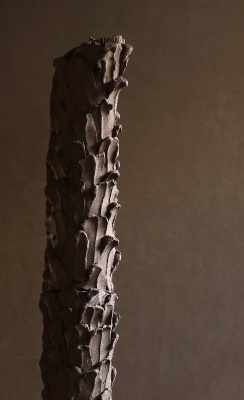Descripción de la Exposición
In 2022, Brazil celebrates two important historical anniversaries: the bicentennial of the nation’s independence and the centennial of the Modern Art Week of 1922. To mark these dates, Sesc São Paulo is holding, throughout the year, the action Diversos 22-Projetos, Memórias, Conexões, carried out in a network with other institutions and offering a broad cultural programming that seeks to critically reflect on these milestones and to set them into relationship with our current urgencies. For the institution, the initiative aims “to constitute perspectives that allow us to think about the country in a different and complex way, with its contradictions and potentials, turning them into propositional resources.”
The exhibition Raio-que-o-parta: ficções do moderno no Brasil (Raio-que-o-parta: Brazil’s fictions of modern) which opened to the public on February 16, is one of the highlights of this project. This visual-art show presents works by around 200 artists from all over Brazil distributed in a 1,300-square-meter exhibition space at the Sesc 24 de Maio unit, located in downtown São Paulo. Artists whose works are present in the show include Alberto da Veiga Guignard (1896-1962), Anita Malfatti (1889-1964), Genaro de Carvalho (1926-1971), Lídia Baís (1900-1985), Mestre Vitalino (1886-1973), Mestre Zumba (1920-1996), Pagu (1910-1962), Raimundo Cela (1890-1954), Rubem Valentim (1922-1991), Tarsila do Amaral (1886-1973) and Tomie Ohtake (1913- 2015).
The curatorship was carried out based on the collective work of seven researchers who work in different cities in the country and conduct research linked to the historiography of Brazilian art. The curatorial team consists of Aldrin Figueiredo, Clarissa Diniz, Divino Sobral, Marcelo Campos and Paula Ramos together with Raphael Fonseca as chief curator and with consulting by Fernanda Pitta. According to the curators, the collective research aimed to bring together historical works which, in some way, offer dialogic counterpoints to the notion of “modern art” in Brazil. A second condition for the selection of works was the enlargement of the temporal span beyond the first decades of the 20th century-the period in which modernism is normally situated-to include productions that range from the late 19th century to the mid-20th century.
The exhibition’s title refers to a vernacular decorative style of residences found in the city of Belém, state of Pará, in Brazil’s North region. The style is characterized by geometric, angular and colorful patterns reminiscent of arrows, lightning bolts and boomerangs made through the juxtaposition of fragments of ceramic tiles to decorate house façades, inspired in the architectural modernism linked to the elites of the country’s Southeast in the mid-20th century. This decorative style became a fad in the 1950s in Belém, spreading through various districts and was nicknamed by the architects of that time in a pejorative way as way as “raio-que-o-parta” - something like “the hell with it”, in a manner to express indignation or anger.
By linking the notion of identity to various places throughout the extensive Brazilian territory, the show proposes an alternative reading, set apart from the canonic version of the artistic movement from the city of São Paulo. To this end, the show also includes a variety of artistic languages, revealing an understanding of the visual arts as a complex cultural production. Besides drawings, paintings and sculptures, there are also photographs, films, illustrated magazines, musical pieces and documentations of ephemeral actions. The works were organized in four thematic groups that allude to the collective and associative artistic manifestations that took place in the country, such as samba schools and literary groups.
Featuring around 650 works from various institutions and collections in Brazil, the exhibition held by Sesc São Paulo seeks to “shed light on the different fictions of modernity, offering the public a diverse and heterogenous context of Brazilian modern art.” The initiative presents a revision of the history of Brazilian art that is open to a decolonial perspective, constructing a more plural and often contradictory narrative that spurs the viewer to think about the very asymmetric country of Brazil in a broader way.

Exposición. 17 abr de 2025 - 03 sep de 2025 / Centro Cultural Andratx (CCA) / Andratx, Baleares, España

Formación. 08 may de 2025 - 17 may de 2025 / Museo Nacional Centro de Arte Reina Sofía (MNCARS) / Madrid, España